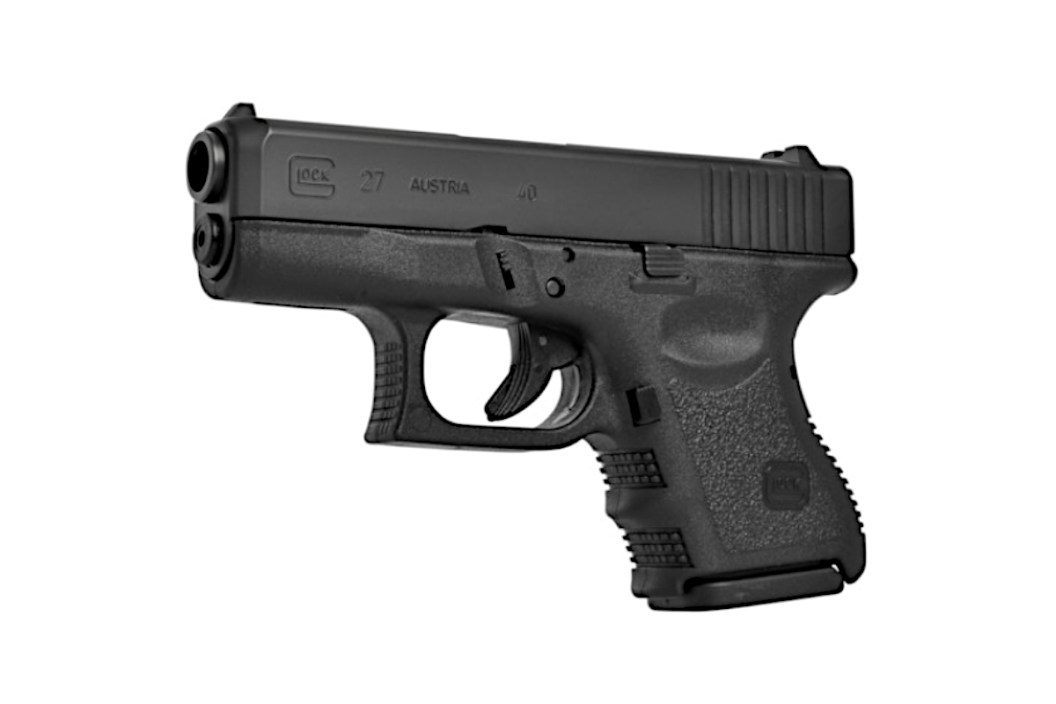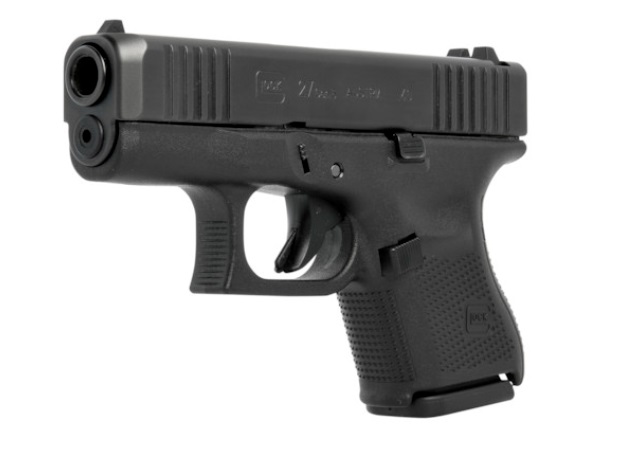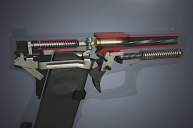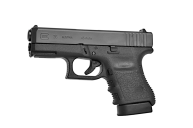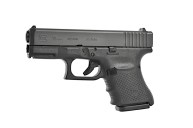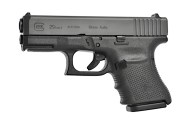The Glock 27 is a mighty handgun in a small package.
Polymer frame Glock pistols are some of the most popular on the market with people who concealed carry because they are reliable, easy to use, and maintain. The Glock 27 chambered in .40 S&W is one of the most popular subcompact pistols on the market for a good reason.
This handgun has the firepower for almost any self-defense scenario combined with an incredible small size that is perfect for concealment. For many, this firearm is the cream of the crop.
Today we will answer some of the Internet's most frequently asked questions about this mighty subcompact Glock and why it should be on the short list of firearms to consider for personal protection.
Size and specs of the Glock 27
While Glock makes plenty of options in .40 Smith & Wesson, including popular guns like the Glock 22 and Glock 23, the 27 is the only subcompact pistol of the bunch. Those other two offerings are in Glock's "compact" and "standard" classifications with both being closer to a full-size like the Glock 17. In fact, you will usually see this gun compared to the 9mm Glock 26. This is because in terms of size, the two weapons are near identical. We say near because there are some very slight differences. However, many shooters will likely not notice them because of how subtle they are. The Gen 4 Glock 27 has a 3.43-inch barrel length, a 1.26-inch slide width, a 4.17-inch overall height, and a 6.50-inch overall length.
The only real difference between the two semi-automatics is in magazine capacity. The G27 uses 9-round magazines standard while the 26 holds one extra. The weight is almost identical too. The Glock 27 is only one ounce heavier at 26.46 ounces with a fully loaded magazine.
These specs are almost identical for the Gen 5 versions. The difference there is that the Gen 5s have a slide that is fractionally wider, giving the gun a slightly longer overall width at 1.30 inches. The height is also greater at 4.21 inches. The length is identical. Either way, this is a slim gun that is well-suited for inside the waistband (IWB) carry.
All the other standard Glock features are here. The trigger pull is mostly the same, as is the changeable backstrap system, reversible magazine catch, slide stop, and "safe action" trigger safety system. We really do appreciate the accessibility of Glock. If you have used one, you will know how to operate them all.
Is Glock 26 better than 27?
This is an extremely subjective question and if you are on the fence, you might want to fire both before you make a final decision about which to add to your wishlist. As we have already noted, the 27's size is almost identical to the 26. The only real difference is the amount of stopping power and the magazine capacity. The 26 holds one more round. And while 9mm may be faster in some cases depending on ammo, the stopping power of the .40 S&W is going to be greater simply because of the energy behind it.
In truth, both models are solid options for anyone looking to pick up a new carry gun. You simply must ask yourself which is more important. Capacity or power? Even then, you could argue one more round in the 26 might not make a ton of difference. Most self-defense encounters are over in less than five shots if you really start digging into the stats.
Is Glock 27 a good gun?
The fact that so many members of law enforcement agencies utilize the Glock 27 as a backup weapon is a testament to this handgun's success. The design of the 27 has proven to be extremely reliable in defensive situations. Even better, the gun's small profile makes it extremely easy to carry, especially when compared to larger options like the Glock 19 or 23. If you want a gun that will not print without sacrificing firepower, the 27 is a solid option to consider. Especially if you plan to lug it around all day every day.
Speaking of firepower there is no doubting the effectiveness of .40 S&W. You are looking at muzzle velocities between 1,100 and 1,400 feet per second that will deliver anywhere from 450-590-foot pounds of energy to the target, even with heavy jacketed hollow points. That is more than enough to dissuade or stop a threat. Remember that this round was developed in the early 90s in a collaboration with S&W, Winchester, and the FBI. The idea being to make a round with a performance comparable to that of a 10mm. Just one that works better in smaller firearms with a reduction in recoil.
If there is one downside to this firearm it is that the ammo is going to be a little more expensive than a 9mm option. You can also expect it to be a little harder to handle than something like the Glock 26. However, that is to be expected with the upgrade in firepower. One thing is for sure, the Glock 27 has proven immensely popular. There is something to be said for a gun that has so many holster and aftermarket parts options for new triggers, recoil springs, and night sights so readily available. The Glock 27 is an excellent gun, and it seems to age like a fine wine, only getting better with time.
How much does a Glock Model 27 cost?
The great news about the Glock 27 is that it is highly affordable. A new one usually starts around $550 and used ones can be found for significantly less with a little bit of hunting.
If you are stuck between Gen 3, 4, or 5, the differences are extremely subtle. The Gen 5 models have an extra set of slide serrations on the front which make it easier to operate. The Gen 5 also has the same stippled grip pattern, but no finger grooves. For most people, they must handle both before they know which one suits them best. The Gen 5 version also has some slight beveling on the end of the slide that makes it easier to draw from a holster.
We should add that sub-$600 price tag is comparable to the Model 26. At the end of the day, you cannot go wrong with either, it is simply a matter of which one fits your needs the best.
For more outdoor content from Travis Smola, be sure to follow him on Twitter and check out his Geocaching and Outdoors with Travis YouTube channels.
NEXT: THE 5 BEST HOME DEFENSE SHOTGUNS
WATCH
